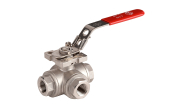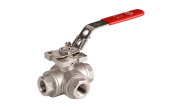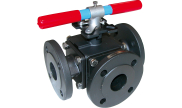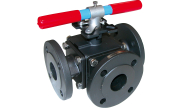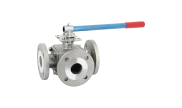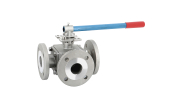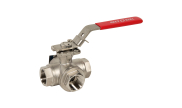Local Storage seems to be disabled in your browser.
For the best experience on our site, be sure to turn on Local Storage in your browser.
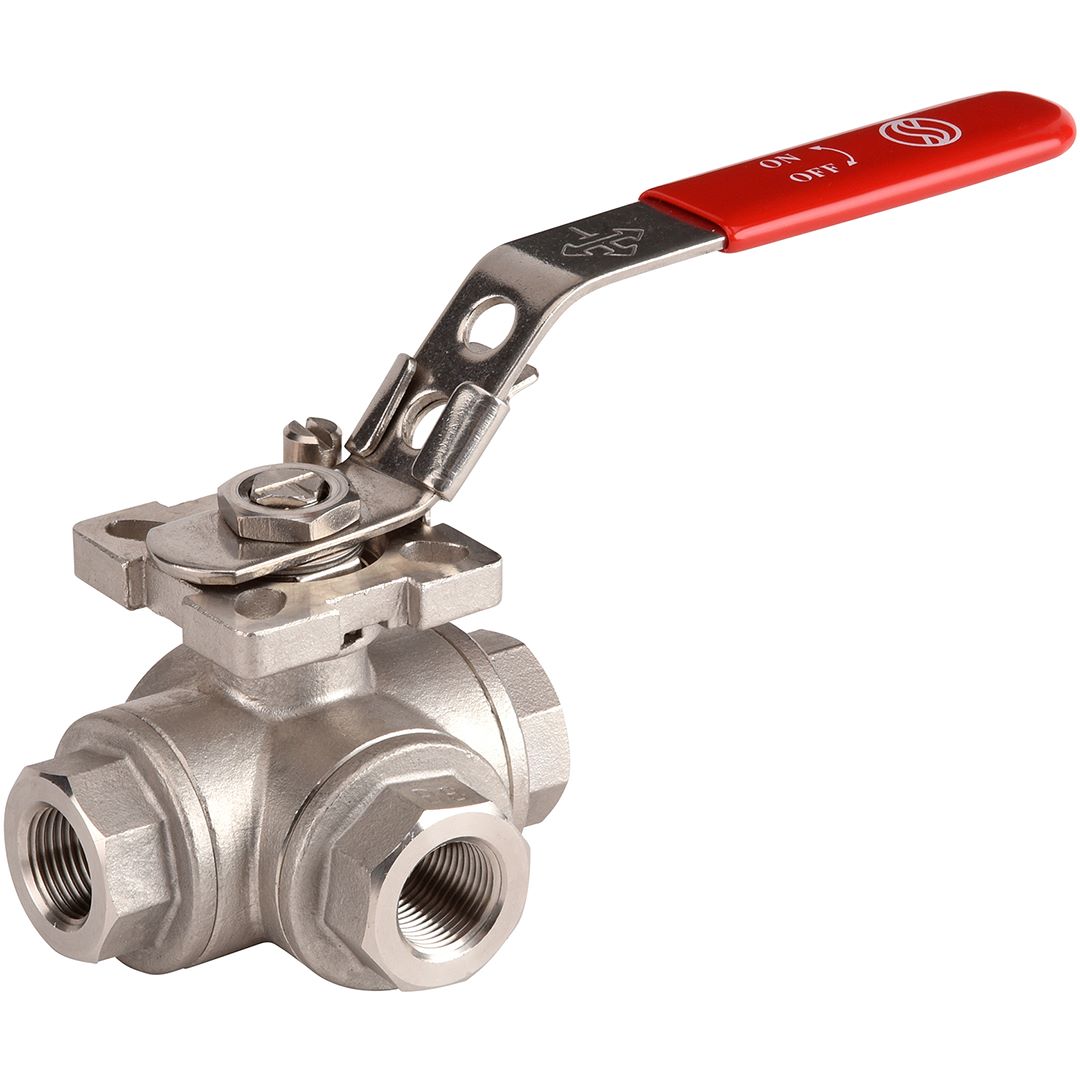
3-way
Flanged three-way ball valves: what is the use
They are very common valves in the chemical and petrochemical industries, as well as in hydraulic installations, heating systems, water distribution, and compressed air systems. Three-way ball valves are used to control one or several fluids direction. They are perfect for mixing or distributing fluids coming from and/or going to a primary or a secondary circuit, or fully closing a way if necessary.
They are two different types of three-way valves, each one with specific functionalities:
- L port valves are used to divert flows (one input, two possible outputs), or to select a circuit (two possible inputs, one single input)
- T port valves are used to mix (two concurrent inputs, one single output) or to distribute fluids (one or several inputs, one or several outputs, depending on each configuration).
L-port and T-port valves can both be diverting valves: the type of valve will depend on the network layout (inputs and outputs).
Syveco’s offer
There is a large offer of three-way flanged ball valves available at Syveco.
We offer DN25 to DN150 valves, they are in A216WCB carbon steel or in CF8M stainless steel, they are fitted with RF PN16 flanged connections, and a L port or T port. The maximum operating pressure is 16 bar. Carbon steel valves allow temperatures ranging from -20 °C up to +150 °C, and stainless-steel valves allow temperatures ranging from -30 °C up to +150 °C.
In more detail; our three-way flanged ball valves have a great number of technical features and advantages:
- CF8M stainless steel ball
- Full bore
- Anti-blowout stem
- Double antistatic device
- Four RTFE seats (fibreglass-loaded PTFE)
- Tightness on three ways
- Locking device
- ISO 5211 mounting pad
- Trunnion mounted ball valve from DN100 to DN150
Last, all of our three-way RF PN16 flanged valves comply with the 2014/68/UE directive and are ATEX compatible.

